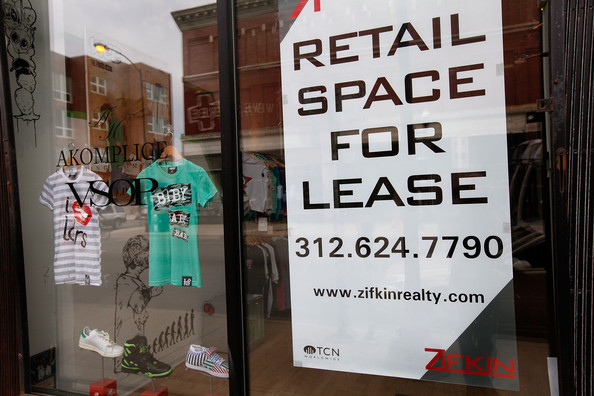Project Selection
Depreciation
Learning Objectives:
- Explain the concept of depreciation.
- Calculate depreciation and book value using straight-line and MACRS methods of depreciation.
Straight Line Method:
Straight line method depreciates cost evenly through out the useful life of the fixed asset. Straight line depreciation is calculated as follows:
\[\mathrm{Depreciation \ per\ annum = \dfrac{(Cost - Residual\ Value)}{ Useful \ Life}}\]
C= Cost of Purchase S\(_n\) = Salvage value after n years n = no. of years
Modified Accelerated Cost Recovery System (MACRS):
In this method:- Depreciation always depreciates to zero
- No salvage value considered.
- MACRS recovery time is always n+1 years.
Use factors given on page 232 of the handbook.
The MACRS is the current tax depreciation system in the United States.
Book Value:
João Pimentel Ferreira, CC BY-SA 3.0, via Wikimedia Commons
Solved Example: 9906-01
Determine the present value of a building that was constructed 30 years ago at \$50,000. The estimated life of the building is 50 years, at the end of which it will have 10% scrap value of its cost of construction. Depreciation is to be calculated by straight line method.
A. $24,000
B. $25,000
C. $23,000
D. $15,000
Scrap value = \$5000
Overall depreciation = 50000 - 5000 = \$45000
per year depreciation = \$45000/50 = \$900
In straight line method, depreciation remains constant.
Book value
\begin{align*}
BV &= \mathrm{Initial\ Cost}-\Sigma D_i\\
&=50000- 30\left( 900\right) \\
&= \$23000
\end{align*}
Correct Answer: C
Solved Example: 9906-02
The value at the end of the utility period without being dismantled is termed as:
A. Market value
B. Salvage value
C. Scrap value
D. Book value
Correct Answer: B
Solved Example: 9906-03
The book value of a property in a particular year is the:
A. Value at the end of utility period
B. Original cost minus the amount of depreciation till date
C. Market value
D. Original cost minus the amount of depreciation up to the previous year
Correct Answer: D
Solved Example: 9906-04
The value of the property shown in the account books after allowing necessary depreciation is called as:
A. Scrap value
B. Salvage value
C. Book value
D. Market value
Correct Answer: C
Lease vs Buy vs Make
Learning Objectives:
- Identify and evaluate the cost components associated with leasing, buying, and making, including initial investment, operational costs, maintenance, and disposal.
- Understand and apply financial metrics such as Net Present Value (NPV), Internal Rate of Return (IRR), Payback Period, and Return on Investment (ROI) to compare leasing, buying, and making decisions.
- Discuss the strategic benefits, such as control over production, quality assurance, and potential for innovation, when opting to make in-house.
Reasons to Lease:
- Help smooth budget spikes
- Facilitate rapid technology deployment
- Facilitate standardization efforts
- Provide an effective disposal strategy for used equipment
Reasons NOT to Lease:
- Lack of in-house asset management program
- Unacceptable risk of signing a multi-year contract commitment to one vendor
- Lack of negotiation and contract management skills
- Inability to adhere to strict contract terms, length and conditions.
Financial Considerations:
- Acquisition cost
- Asset management cost
- Support cost
- Disposal cost

Keashif, CC BY-SA 4.0, via Wikimedia Commons
Solved Example: 9894-01
Given below are two statements : One is labelled as Assertion (A) and the other is labelled as Reason (R).
Assertion (A) : Firms opt for buying an asset if the equivalent annual cost of ownership and operation is less than the best lease rate it can get.
Reason (R) : Operating leases are attractive to equipment users if the lease payment is less than the user's equivalent annual cost of buying the equipment.
In the light of the above statements. choose the most appropriate answer from the options given below :
A. Both (A) and (R) are correct and (R) is the correct explanation of (A)
B. Both (A) and (R) are correct but (R) is NOT the correct explanation of (A)
C. (A) is correct but (R) is not correct
D. (A) is not correct but (R) is correct
Correct Answer: B
Solved Example: 9894-02
A 'sale and lease back' arrangement is more suitable for a lessee having:
A. Liquidity crisis
B. Surplus fund
C. High profit
D. No-profit no-loss
Correct Answer: A
Solved Example: 9894-03
You can lease a vanity van for \$50000 per year (paid at year end) for six years. Alternatively, it can buy the van for \$400000. The van will be worth \$200000 after six years. If the prevailing interest rate is 7%, is it cheaper to buy or lease?
A. Cheaper to buy
B. Cheaper to lease
C. Both are same
D. Additional information is required
Correct Answer: B
Comparison of Projects
Learning Objectives:
- Understand the concept of comparing different engineering projects in terms of feasibility, economics, and technical aspects.
- Recognize and define the key criteria used to evaluate and compare engineering projects, including financial metrics, environmental impact, and safety considerations.

Kokcharov, CC BY-SA 4.0, via Wikimedia Commons
A desirable project is that one whose:
- Net Present Value (NPV) is higher
- Payback period is smaller such that investement is recovered in shortest possible time.
Solved Example: 9892-01
During an assessment of economic viability of the project, the ratio of average annual earnings after tax to the average book investment after depreciation is called:
A. Benefit-Cost Ratio (BCR)
B. Net Present Value (NPV)
C. Pay-Back Period (PBP)
D. Return on Investment (ROI)
Correct Answer: D